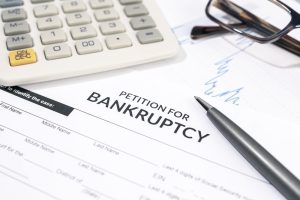
How Do I File Bankruptcy and Keep My Car? A Step-by-Step Guide to Protecting Your Vehicle
How Do I File Bankruptcy and Keep My Car Legally? How do I file bankruptcy and keep my car is
Error: Contact form not found.
Lorem ipsum dolor sit amet, consectetur adipiscing elit. Ut elit tellus, luctus nec ullamcorper mattis, pulvinar dapibus leo.
How do I file bankruptcy and keep my car is one of the most common concerns people have when considering debt relief. Your car is often essential for getting to work, caring for your family, and maintaining stability. Fortunately, there are legal ways to keep your vehicle when filing for bankruptcy.
This article explains how to protect your car during bankruptcy, whether you file Chapter 7 or Chapter 13.
Chapter 7 bankruptcy is designed to eliminate unsecured debt quickly, but it may involve selling certain assets. Still, many people keep their cars through exemptions or loan strategies.
Each state provides exemption laws that protect a certain amount of vehicle equity. If your car’s equity (market value minus loan balance) falls within your state’s exemption limits, you can usually keep it.
For example:
If you’re still paying on your car loan, you may be able to reaffirm the loan, which means you agree to continue making payments even after your other debts are discharged.
Reaffirmation is useful if:
But be careful: if you default after reaffirmation, the lender can still repossess the car and hold you responsible for the balance.
Redemption allows you to pay the current market value of your car in a lump sum, even if you owe more than it’s worth. For example, if your loan balance is $10,000 but the car is only worth $6,000, you can redeem it for $6,000 and wipe out the rest.
This option is ideal for over-financed vehicles, but you must be able to pay the lump sum quickly.
If you’re behind on payments or don’t qualify for Chapter 7, Chapter 13 offers a repayment plan to catch up over time.
One major benefit of Chapter 13 is the ability to catch up on late car payments through a 3–5 year court-approved repayment plan. This prevents repossession and helps you retain your car without needing a lump sum.
Chapter 13 may allow a cramdown on your auto loan. If your car is worth less than what you owe—and you purchased it more than 910 days before filing—you can reduce the loan balance to the car’s current value.
This significantly lowers your payment obligation while letting you keep your vehicle.
Before you file, ask yourself:
Being strategic with timing, exemptions, and legal options can make the difference in keeping your vehicle. Working with a professional can help you choose the right approach based on your situation.
When asking, How do I file bankruptcy and keep my car, remember: both Chapter 7 and Chapter 13 offer different tools to help you. Whether it’s reaffirming a loan, claiming exemptions, or using a repayment plan, the right strategy depends on your car’s value, your loan status, and the type of bankruptcy you choose.
Understanding your rights and acting early increases your chances of keeping your vehicle while eliminating debt.
Need advice on how do I file bankruptcy and keep my car in your specific state? You’re not alone. At Bankruptcy Attorneys, we help people protect essential assets like their vehicles while getting the debt relief they need.
Start with a free evaluation and find out whether Chapter 7 or Chapter 13 is the best option for you.
Yes, if the equity is within your state’s exemption limit.
You may need to pay the difference or switch to Chapter 13 to protect it.
Yes, but you must continue making payments and formally assume the lease.
Yes. Filing automatically stops most collections, including repossession.
You can voluntarily give up the vehicle and have the remaining debt discharged.

How Do I File Bankruptcy and Keep My Car Legally? How do I file bankruptcy and keep my car is
| Cookie | Duration | Description |
|---|---|---|
| cookielawinfo-checkbox-analytics | 11 months | This cookie is set by GDPR Cookie Consent plugin. The cookie is used to store the user consent for the cookies in the category "Analytics". |
| cookielawinfo-checkbox-functional | 11 months | The cookie is set by GDPR cookie consent to record the user consent for the cookies in the category "Functional". |
| cookielawinfo-checkbox-necessary | 11 months | This cookie is set by GDPR Cookie Consent plugin. The cookies is used to store the user consent for the cookies in the category "Necessary". |
| cookielawinfo-checkbox-others | 11 months | This cookie is set by GDPR Cookie Consent plugin. The cookie is used to store the user consent for the cookies in the category "Other. |
| cookielawinfo-checkbox-performance | 11 months | This cookie is set by GDPR Cookie Consent plugin. The cookie is used to store the user consent for the cookies in the category "Performance". |
| viewed_cookie_policy | 11 months | The cookie is set by the GDPR Cookie Consent plugin and is used to store whether or not user has consented to the use of cookies. It does not store any personal data. |